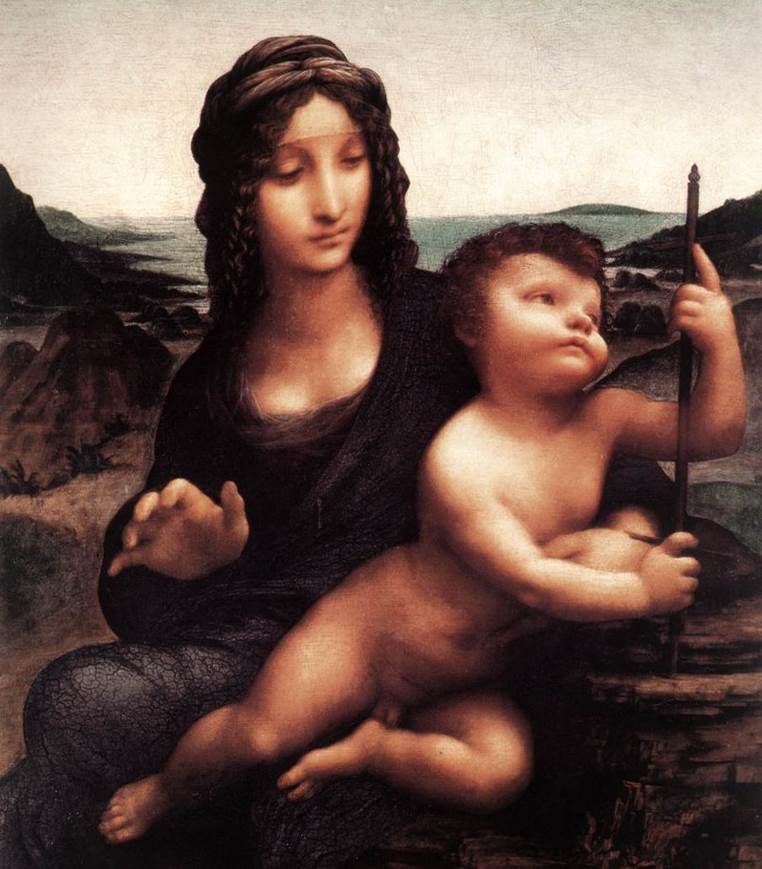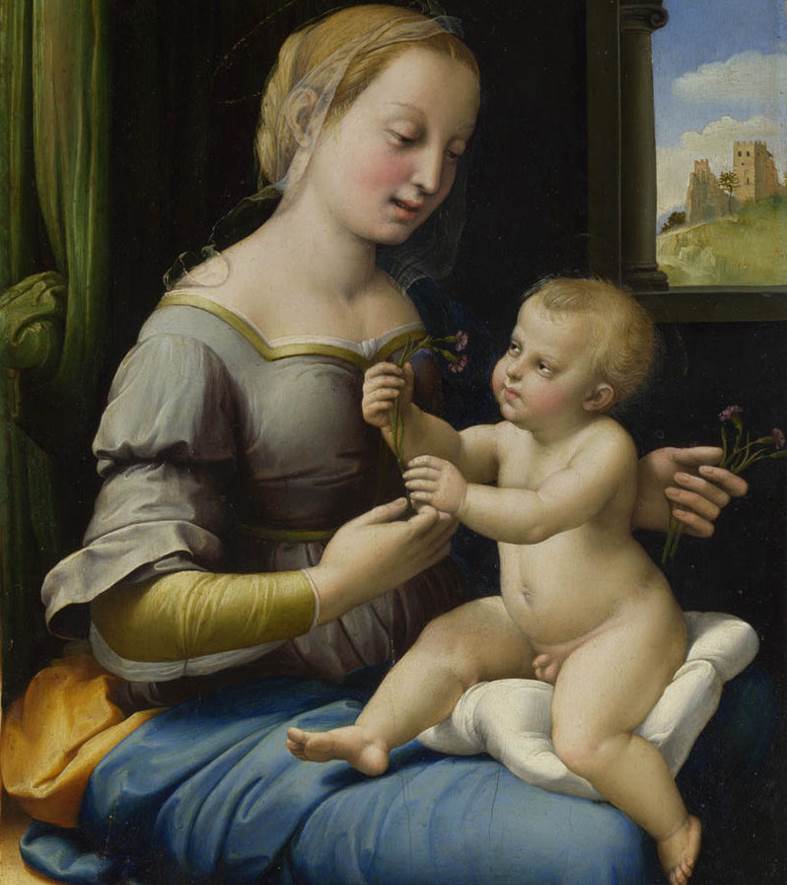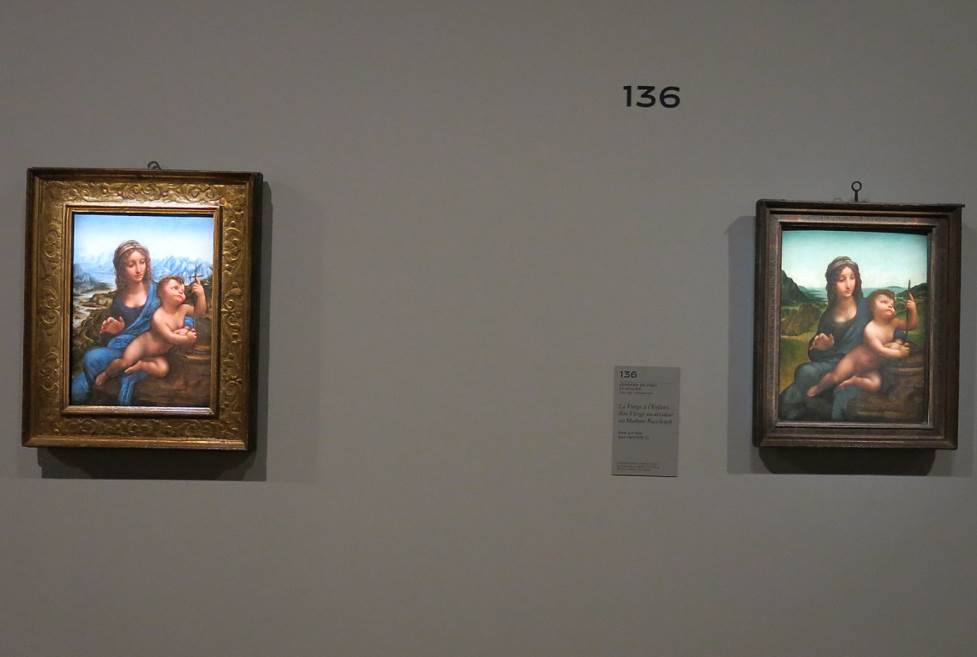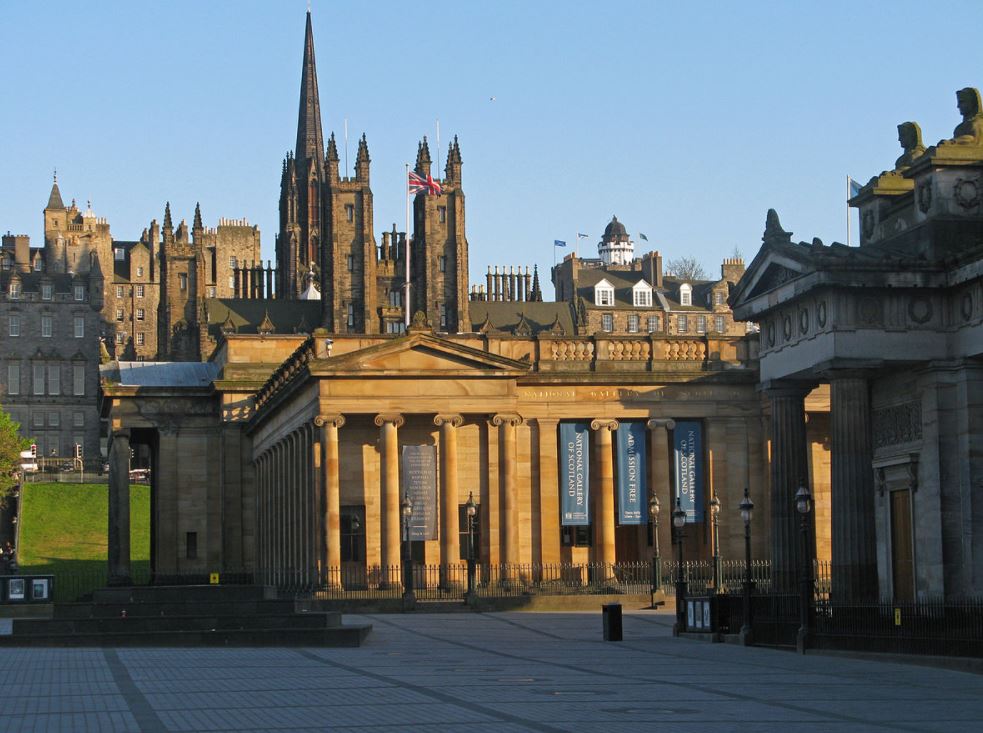Leonardo da Vinci (1452-1519) wasn’t the most prolific painter in the world, but once he managed to complete one, they became some of the most influential Renaissance paintings ever produced.
We all know the Mona Lisa Painting, arguably the most famous painting ever produced. Just before he started working on this masterpiece in the early 16th century, he painted one and possibly two paintings that would become even more influential.
Let’s take a closer look at some of the most interesting facts about Madonna of the Yarnwinder, the subject of one or two delicate little paintings by da Vinci that emphasize the genius of the Renaissance master.
1. It refers to two paintings in which da Vinci possibly had hand
Madonna of the Yarnwinder is the name of a subject of at least two paintings in which Leonard da Vinci possibly had a hand. Leonardo had just fled Milan because of the invading French which resulted in the capture of his patron in the city, Duke Ludovico Sforza.
During his stay in Milan, he produced multiple world-famous artworks, including The Last Supper painting at Santa Maria delle Grazie, a portrait called La Belle Ferronnière, and the Virgin of the Rocks, to name just a few.
It’s believed that the famous Italian artist started working on this particular composition when he returned to the city of Florence after a brief stay in Venice. This was the city where he initially became a master.

2. It depicts a common scene in Renaissance art
A scene of the Virgin Mary, commonly referred to as a “Madonna,” together with her child Jesus Christ was a common subject in the Renaissance. This particular painting has a remarkable composition because the child appears to be twisting away from his mother’s embrace.
He does so to closely observe a so-called niddy-noddy, a tool used to spin yarn, a type of fiber that is used to produce forms of textile. Mary is holding up her right hand as if she is shocked by the sudden movement of her child.
This particular tool, from which the painting “Madonna of the Yarnwinder” got its name, wasn’t chosen by accident by the artist. It’s a symbol that represents the looming crucifixion of Jesus Christ because the position of the child’s arm turns the tool into a cross.

3. The main version was possibly commissioned by a powerful Italian woman
The earliest reference to a painting by Leonardo with this subject was made on April 14, 1501. This is why art historians assume that the preparatory drawings of the painting were started in either 1499 to 1500.
Isabella d’Este, Marchioness of Mantua and patroness of the arts who once employed Leonardo, wanted to have a completed painting by the artist. This wasn’t an easy task because the mind of the ultimate Renaissance man was often distracted.
She urged the head of the Carmelites in Florence, a man named Fra Pietro da Novellara, to try and commission a painting from Leonardo for her. The reply of this man was a clear description of a painting with this subject:
The little picture which he is doing is of a Madonna seated as if she were about to spin yarn. The Child has placed his foot on the basket of yarns and has grasped the yarn-winder and gazes attentively at four spokes that are in the form of a cross. As if desirous of the cross he smiles and holds it firm, and is unwilling to yield it to his Mother who seems to want to take it away from him.

4. The second version somehow made it to France
The main version of the painting is now referred to as the “Buccleuch Madonna, a reference to the Duke of Buccleuch who owns it. The second version of the painting is called the Lansdowne Madonna, a reference to the Marquesses of Lansdowne who owned this painting in the 19th century.
It’s assumed that this version was originally commissioned by a man named Florimond Robertet, the secretary of King Louis XII of France. This means that he probably as the first version àf the painting during his stay in Florence and was thoroughly impressed with it.
What happened next is up for debate. Some art historians believe that the painting was delivered to the French court shortly after it was completed. The Florentine Ambassador in France possibly referred to it in January 1507 writing “A little picture by Leonardo’s hand has recently been brought here and is held to be an excellent thing.”
Either way, one version of Madonna of the Yarnwinder remained in Leonardo’s workshop when he passed away in 1519. What we do know is that both the Buccleuch Madonna and the Lansdowne Madonna were in France during the 18th century.

5. The paintings had an immense influence on artists of the High Renaissance
Paintings depicting Madonna and Child were already popular during the Renaissance, but the popularity of this subject exploded during the High Renaissance. It’s fair to conclude that Leonardo da Vinci played a major role in this with the unique composition he integrated.
Leonardo’s work had a major influence on other artists and especially the multiple paintings by Raphael. He painted numerous paintings depicting the Virgin Mary and her child in the first decade of the 16th century.
Some of these works are “Madonna of the Pinks,” “Madonna and Child with Saint John the Baptist,” and “Madonna of the Goldfinch.”

6. It’s unclear what the stake of Leonardo really was due to the many copies
Leonardo became a master during the 1470s and already managed a large workshop by the early 16th century. This combined with the fact that he was often distracted by other pursuits sometimes makes it difficult to determine what the exact stake in his paintings was.
Most art historians agree that both Leonardo and one or multiple of the pupils in his workshop completed the two main versions of Madonna of the Yarnwinder.
This attribution becomes even more complicated with the notion that about 40 copies of this subject from both his workshop and his followers survive today. These copies are scattered in famous museums all around the world today.

7. How big are the paintings?
Leonardo da Vinci didn’t have to produce monumental works of art for them to become world-famous. Except for the Last Supper, most of his artworks are relatively small. This is also the case for the two versions of Madonna of the Yarnwinder.
- The Buccleuch Madonna (1st version) is an oil-on walnut painting with dimensions of 48.3 × 36.9 centimeters (19 × 14.5 inches).
- The Lansdowne Madonna (2nd version) is an oil on panel painting with dimensions of 50.2 × 34.6 centimeters (19.8 × 13.6 inches).

8. Where is Madonna of the Yarnwinder located today?
The Lansdowne Madonna was bought by the Marquesses of Lansdowne before 1809 and eventually made its way to the collection of a Canadian industrialist named Robert Wilson Reford in 1928. He was the first to positively attribute both the Madonna, Child, and landscape to Leonardo.
This painting isn’t on display at the moment except for special exhibitions as it was sold to a private collector in 1999.
The ain version of the painting, the Buccleuch Madonna, is still owned by the Duke of Buccleuch after it entered their collection back in 1767.
It originally hung in Drumlanrig Castle, Dumfries and Galloway, Scotland, but is currently on loan and displayed at the Scottish National Gallery in Edinburgh, the national art gallery of Scotland.



